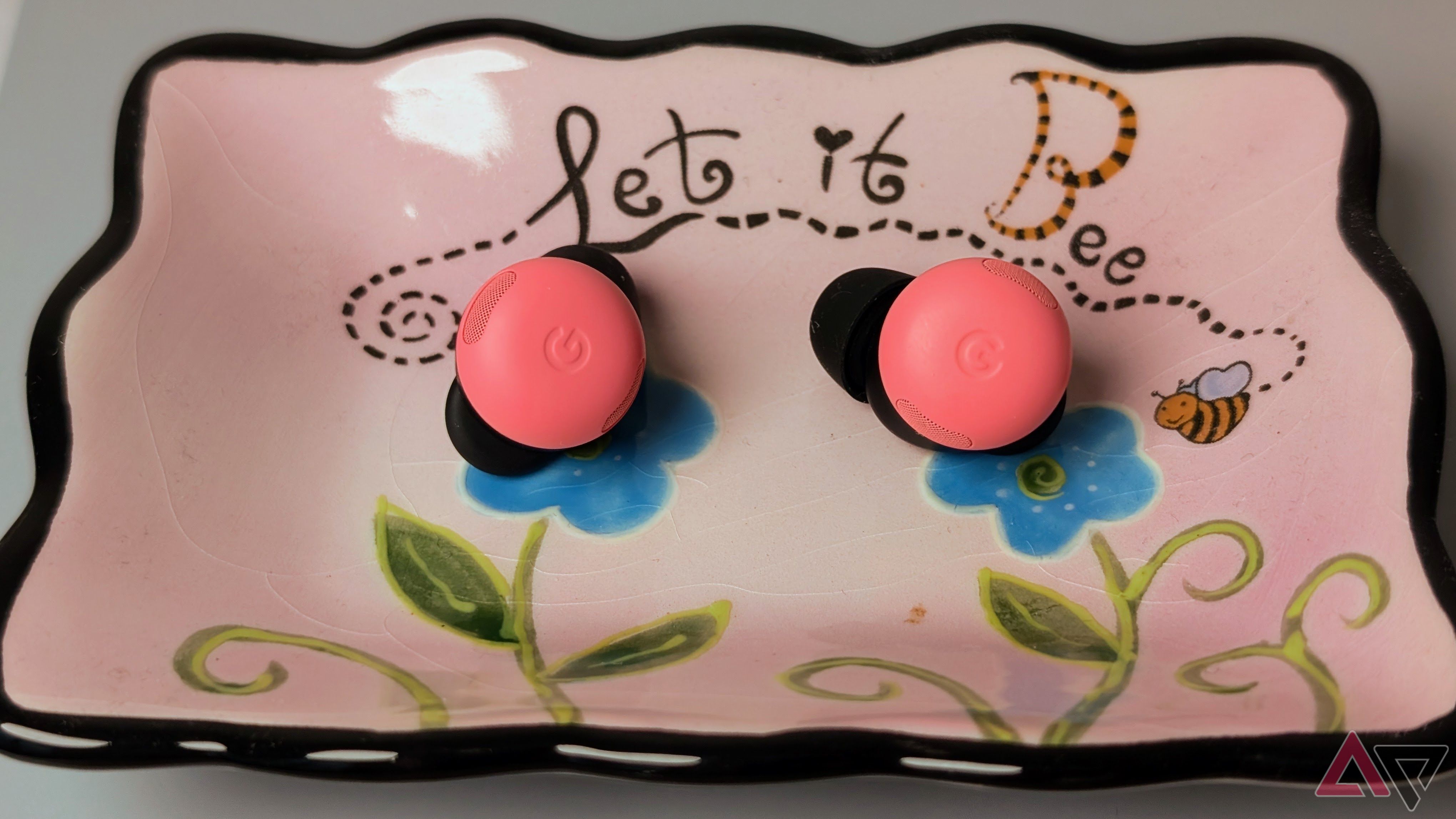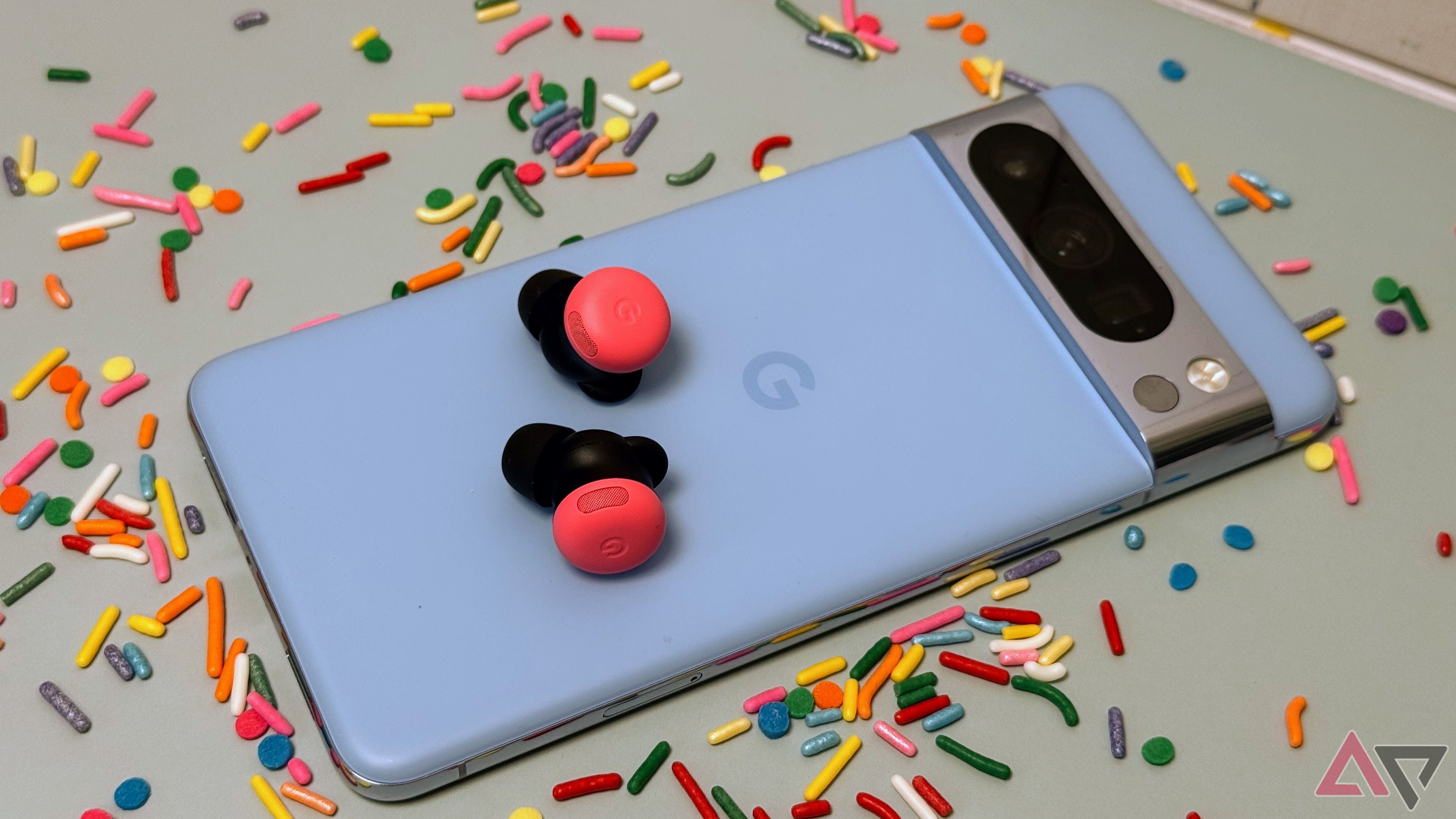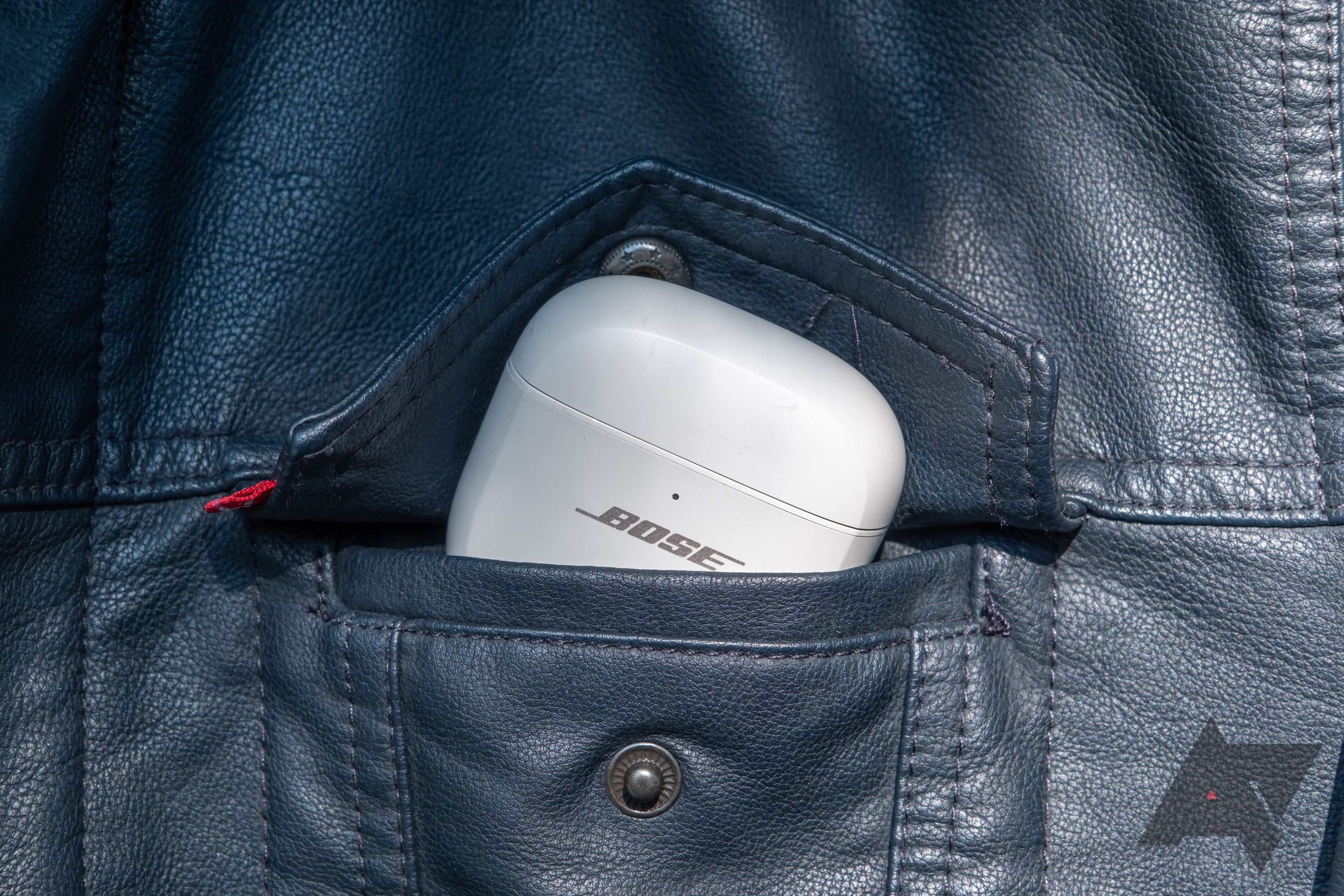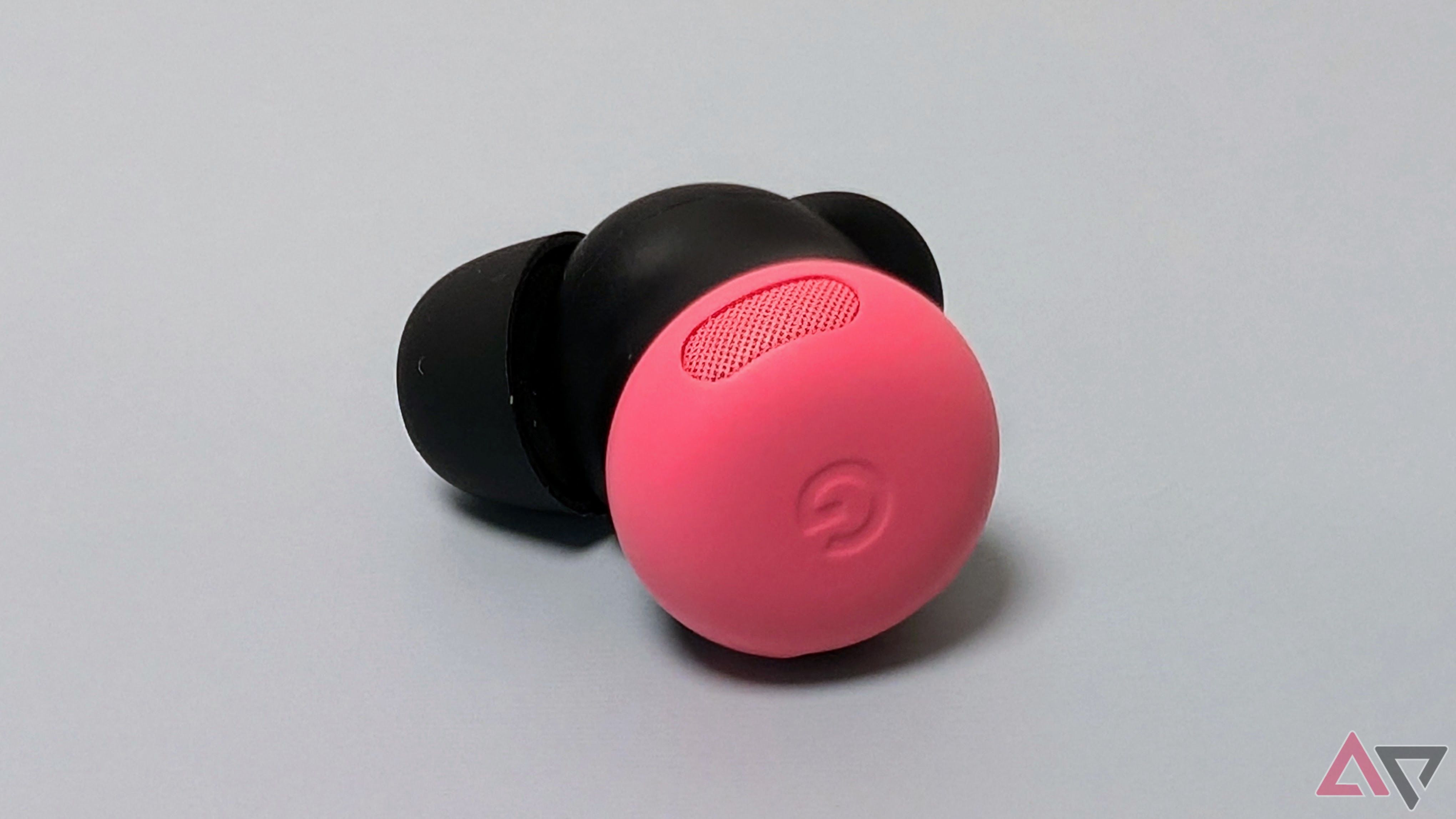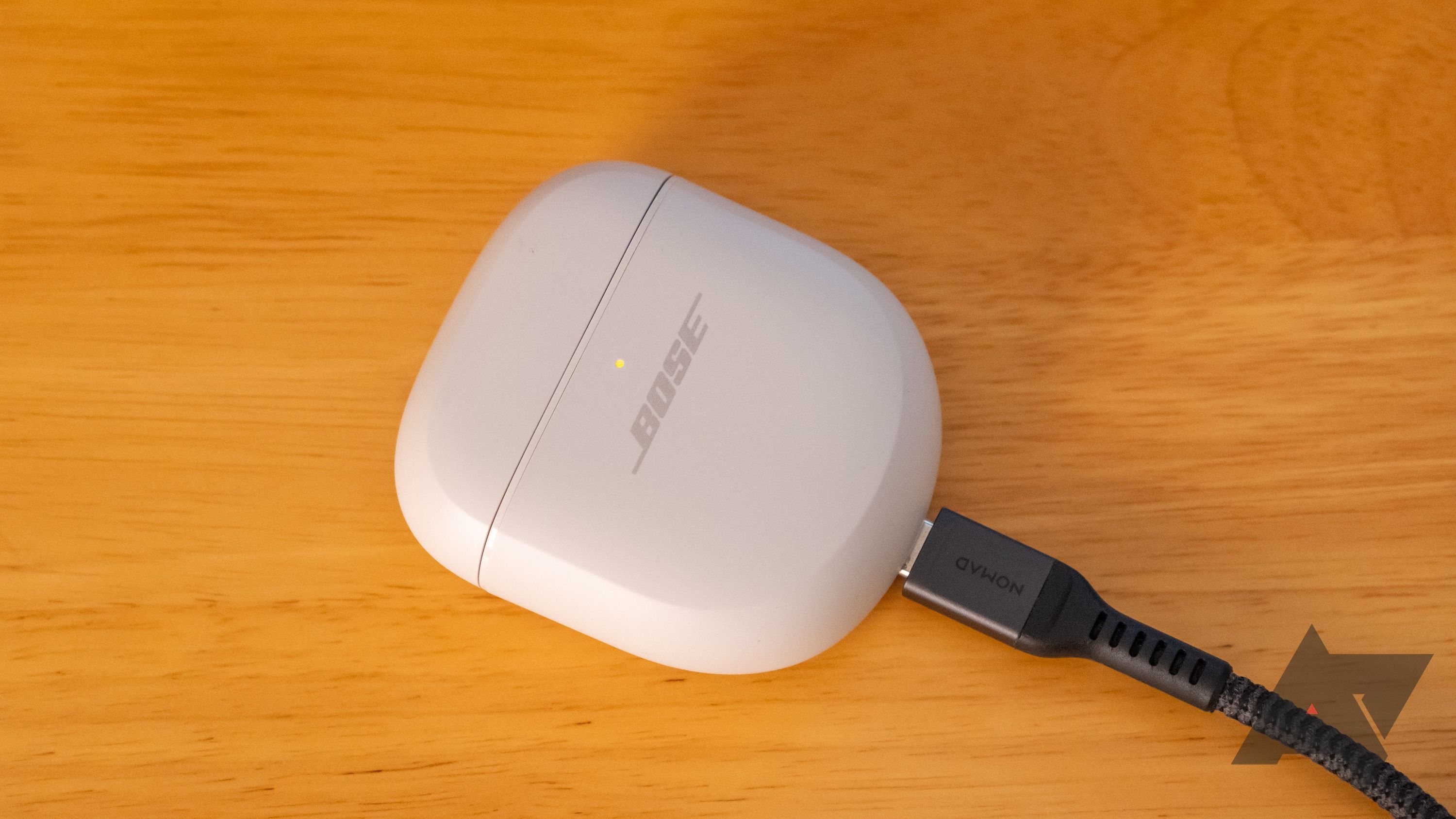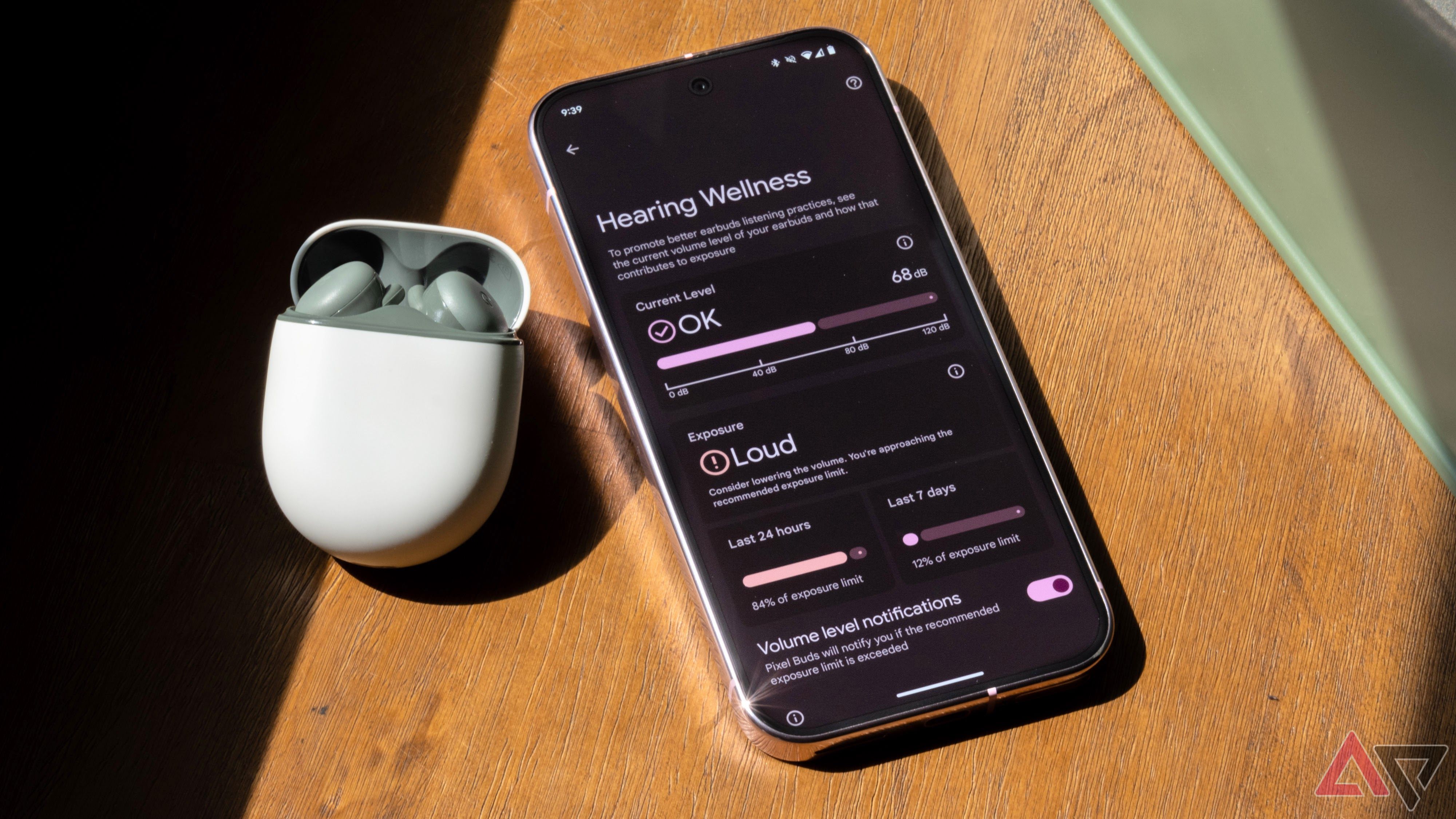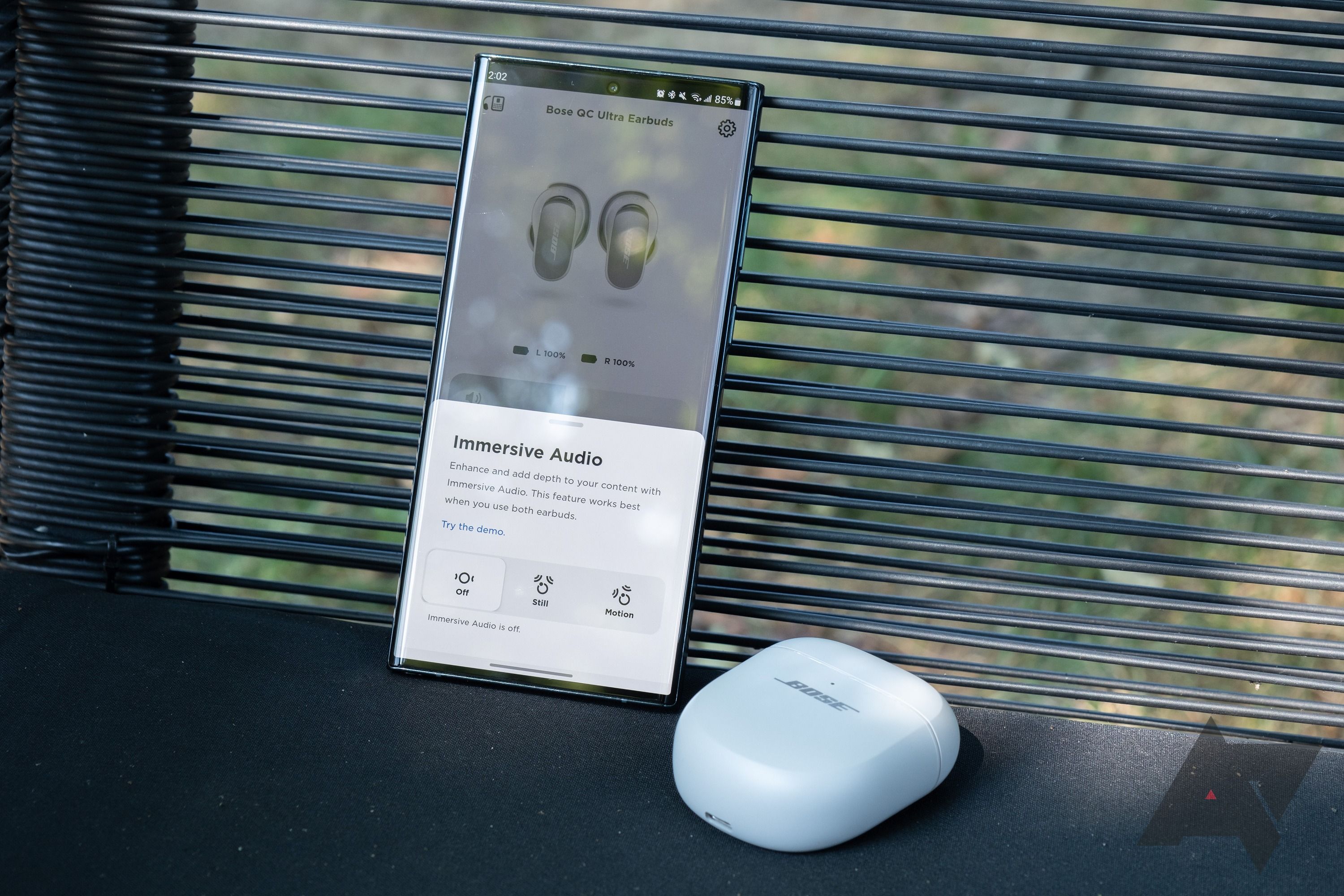-
Boss tier
Bose QuietComfort Ultra Earbuds
$229 $299 Save $70It’s tough to dethrone any Bose product, and the almighty Bose QuietComfort Ultra Earbuds are no exception. We love these truly wireless in-ears for many reasons and can say, without a doubt, that they’re some of the best flagship buds we’ve tested in 2024.
Pros- Warm, bass-friendly sound profile
- Secure and comfortable fit
- Amazing ANC capabilities
- Bose app works with iOS and Android
Cons- Costs more than the Pixel Buds Pro 2
- Battery life is only so-so
-
Assistant manager tier
Google Pixel Buds Pro 2
Google learned a lot from the O.G. Pixel Buds Pro, delivering a slew of significant improvements and a far-more comfortable fit for the Google Pixel Buds Pro 2. While iOS devotees are left in the dust, Android fanatics can use the Pixel Buds app to access all kinds of extra features and earbud customizations.
Pros- Incredible battery life
- Secure and comfortable fit
- Nice sound quality and decent ANC
- Great price for premium ANC buds
Cons- No hi-res codec support
- No Pixel Buds app for iOS devices
Google makes some of the best-sounding, most comfortable, and customizable wireless earbuds, but on the other side of the ring, we have the tried and true Bose with its long-standing QuietComfort lineup. But which of these brands is worth your money? To help you decide, we compared the truly wireless options produced by the two companies: the Google Pixel Buds Pro 2 and the Bose QuietComfort Ultra Earbuds.
Weighing in on essential criteria like sound quality, noise-canceling, and battery life, we leaned on our AV expertise and hands-on experience with both products to construct this comparison.
Price, availability, and specifications
Google is cheaper
The Google Pixel Buds Pro 2 are priced at $230 and are available from major retailers like Amazon, Best Buy, and the Google Store. The Bose QuietComfort Ultra Earbuds are $300 and are offered by all the same retailers, plus Bose.
If you’re looking to break up the monotony of all the black, silver, and white tech devices in the world, the Pixel Buds Pro 2 are available in four kooky colors (Porcelain, Hazel, Wintergreen, and Peony), while the QuietComfort Ultra is more traditional in its black, white, and blue colorways.

Read Our Review
Bose QuietComfort Ultra Earbuds review: Sounds familiar
Last year’s earbuds learn some new tricks, but the experience is largely the same
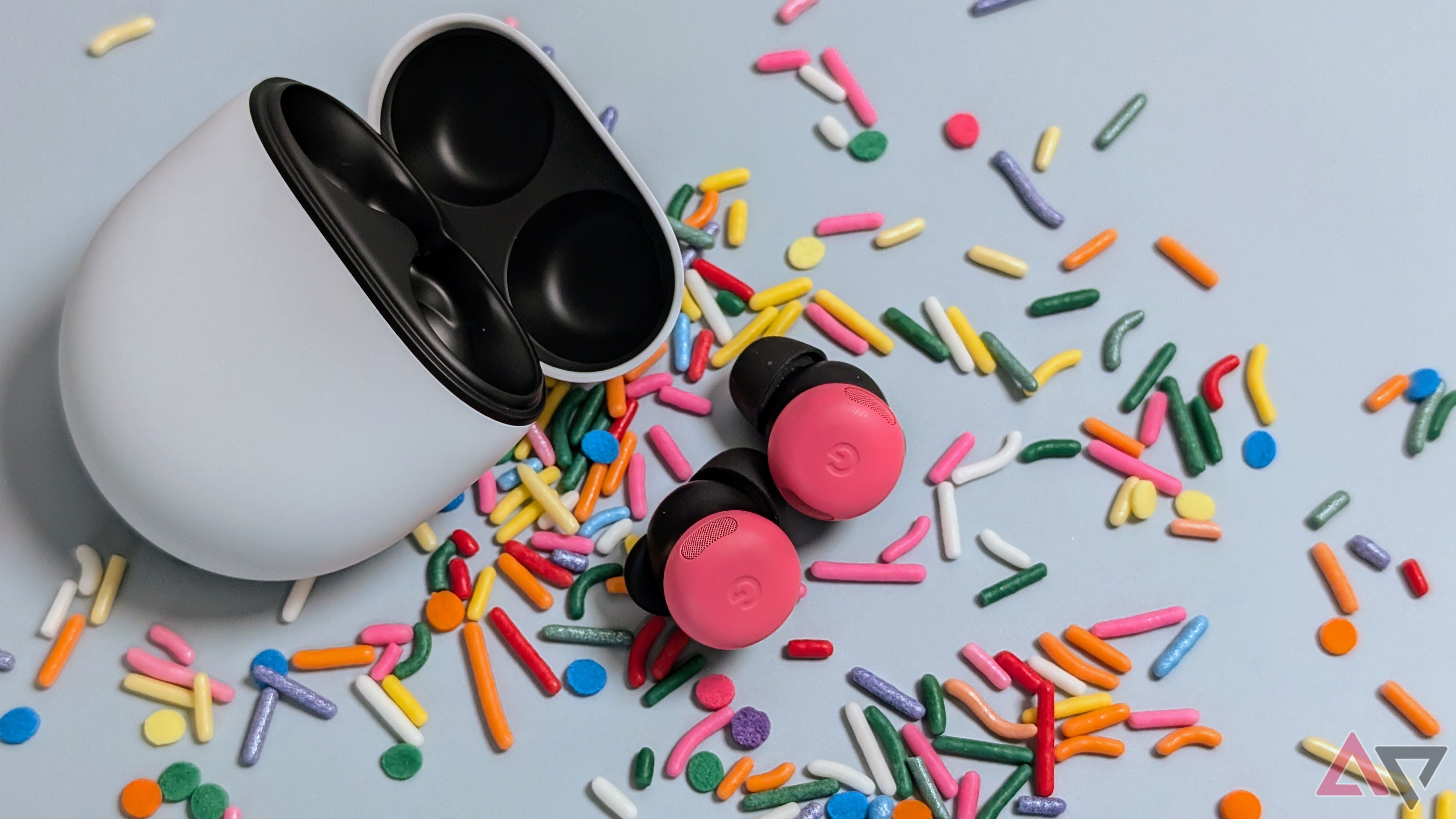
Read Our Review
Review: The Google Pixel Buds Pro 2 are a bright spot in a dull market
A perfect fit with a little extra flair
Design, fit, and controls
Comfortable and secure
The Pixel Buds Pro 2 (herein referred to as PBP2) and Bose QuietComfort Ultra Earbuds (QC Ultra) bring a solid blend of style, comfort, and a handful of conveniences to the table.
In Google’s corner, the PBP2 are slightly smaller than the previous generation of Pixel Buds Pro, allowing them to form a tighter seal in your ear canal; little wings on both buds reinforce the great fit. Bose is no straggler when it comes to comfort and stability, though; the QC Ultra feels nice in-ear and can be worn for long periods of time without irritation. Bose provides four silicone ear tip sizes (as does Google), plus four stability fins for added reinforcement.
As for controls, both the PBP2 and QC Ultra use responsive touchpoints on the glossy, flat exterior of the buds to manage playback, ANC, voice assistants, and other features. You’ll also be able to use both buds’ companion apps to customize some of these controls.
We’ve got to give extra points to Google here for ecosystem integration. If your PBP2 are paired to an Android phone, tablet, or laptop, you’ll have access to first-party features like Google Fast Pair and the Pixel Buds app for Android phones and tablets. While you can’t download the Pixel Buds app for iOS devices, you can download the desktop version of the app for macOS Sonoma or later, as well as Windows.
QC Ultra users can download the Bose app for iOS and Android devices.
Sound quality
Across the board awesomeness
The PBP2 and QC Ultra go all out when it comes to audio performance. The former has impressive highs, mids, and lows, but our reviewer needed to dip into the Pixel Buds app to increase the bass. Out of the box, the QC Ultra already had a warm and bass-forward sound profile that may not require adjustment, especially if you’re into rock, rap, or R&B. Vocals and sibilant instruments (cymbals and trap beats) are bright and detailed with both sets of buds.
Of course, you can tweak audio settings to your heart’s content using Google and Bose’s companion apps. If you’re all about custom sound, it may be important to note that the Pixel Buds app features a five-band EQ, while the Bose app only gives you three adjusters.
Hardware-wise, the PBP2 use custom-designed 11mm dynamic speaker drivers, while the QC Ultra are slightly smaller at 9.3mm. Do keep in mind that we’re dealing with in-ears here, so neither pair is going to deliver a good passive soundstage. Fortunately, features like Google’s Spatial Audio and Bose’s Immersive Audio (brand-speak for Spatial Audio) help to fill out the soundstage a bit more.
One significant advantage that Bose has over Google, though, is that the QC Ultra supports SBC, AAC, and aptX Adaptive formats, whereas the PBP2 is only limited to SBC and AAC (sorry, hi-res fans). Lastly, the PBP2 supports Bluetooth 5.4 and LE Audio, compared to the Bluetooth 5.3 compatibility of the QC Ultra. While this may not have a huge impact on sound quality, the 5.4 standard does maintain faster transfer speeds than version 5.3.
Noise-canceling
Always a Bose advantage
The PBP2 and QC Ultra are the best noise-canceling earbuds made by Google and Bose, which means you should expect big results from both brands. And while the PBP2 deliver a satisfactory ANC experience (our reviewer liked the ANC but didn’t love it), the QC Ultra is a clear winner for this category.
Say goodbye to low-droning engine sounds, HVAC noise, and construction calamities. Even the consistent chatter of loud dialogue is deadened by the QC Ultra, and Bose claims its ANC tech is refined for phone calls, too. This isn’t to say that the noise-canceling you’ll get from the PBP2 is lackluster in any way; it’s just a rung below what the QC Ultra is capable of.
However, there is a widely publicized “hiccup” in the QC Ultra’s ANC performance. Every once in a while, users (including our reviewer) have noticed minor hissing and popping sounds coming from the left earbud. This may not be a deal-breaker for most, but when you’re paying upwards of $200 for flagship buds, any glitch is a glitch worth knowing about.
Call quality
Never a strong point for earbuds of any kind
Phone calls are often a sore spot with wireless in-ear buds, and while the PBP2 and QC Ultra are top-shelf offerings from both brands, plain and simple, it’s hard to make little microphones behave like big microphones.
This is all to say that neither the PBP2 nor the QC Ultra do a very good at making your voice sound anything more than audible, and that’s not leaps-and-bounds-different from other sets of premium buds on the market. This is because the mics are located far from your mouth, so your dialogue may sound a bit distant to the person at the other end of your calls.
Both our PBP2 and QC Ultra reviewers leaned on “good” to describe the call quality for the respective buds they tested, though “great” would have been the term we preferred to use. Our recommendation: do your best to take any truly wireless ANC earbud calls in a quiet environment.
Battery life
Google wins this one
The PBP2 offers up to eight hours of battery life on a full charge with ANC enabled, plus an extra 30 hours from a topped-off charging case. The PBP2’s battery life blew away our reviewer, though we do wish Google made the case Qi-compatible for wireless charging.
As for Bose, the QC Ultra manages to dish out six hours on a full charge with ANC enabled, plus an extra 21 hours via a topped-off case. While Bose gets points for Qi compatibility, it’s the Google product that has better battery life overall.
Software
Each app is packed with features
When it comes to additional features and customizations, both the Pixel Buds app (for the PBP2) and the Bose app for iOS and Android (for the QC Ultra) are tremendous tools that let you personalize your earbuds across several intuitive dashboards. The apps are your gateways to Spatial Audio, gesture controls, and software updates, too.
With firmware 5.9, the Pixel Buds Pro app adds Conversation Detection to its slew of capabilities, allowing the PBP2 to enter Transparency mode when human voices are heard automatically. Another feature called Hearing Wellness will let you know if you’re listening to music and podcasts too loudly.
Curiously, Bluetooth Multipoint isn’t enabled by default, though. Our reviewer had to reach out to Google to ask where the Multipoint Toggle function was even located. Oh, and let’s not forget that iOS devotees are completely out of luck when it comes to PBP2 customization, as the Pixel Buds app only works on Android devices (though you can still download the desktop app for macOS and Windows).
The Bose app works with both iOS and Android devices and offers many of the same earbud customizations as the Pixel Buds app. The Bose app will even let you choose from three ANC presets on top of slider controls for ANC intensity.
Which is right for you?
Take a bow, Bose!
Don’t get us wrong: we love the Pixel Buds Pro 2, but when it comes to overall performance, features, and value, our money goes to the Bose QuietComfort Ultra Earbuds.
Yes, they’re $70 more than the PBP2, and they don’t quite reach the battery life of Google’s flagship in-ears, but Bose’s years in the ANC trenches is never more evident than with the QC Ultra. These earbuds offer some of the best (and most customizable) ANC we’ve heard in a while, and the Bose app works with both iOS and Android
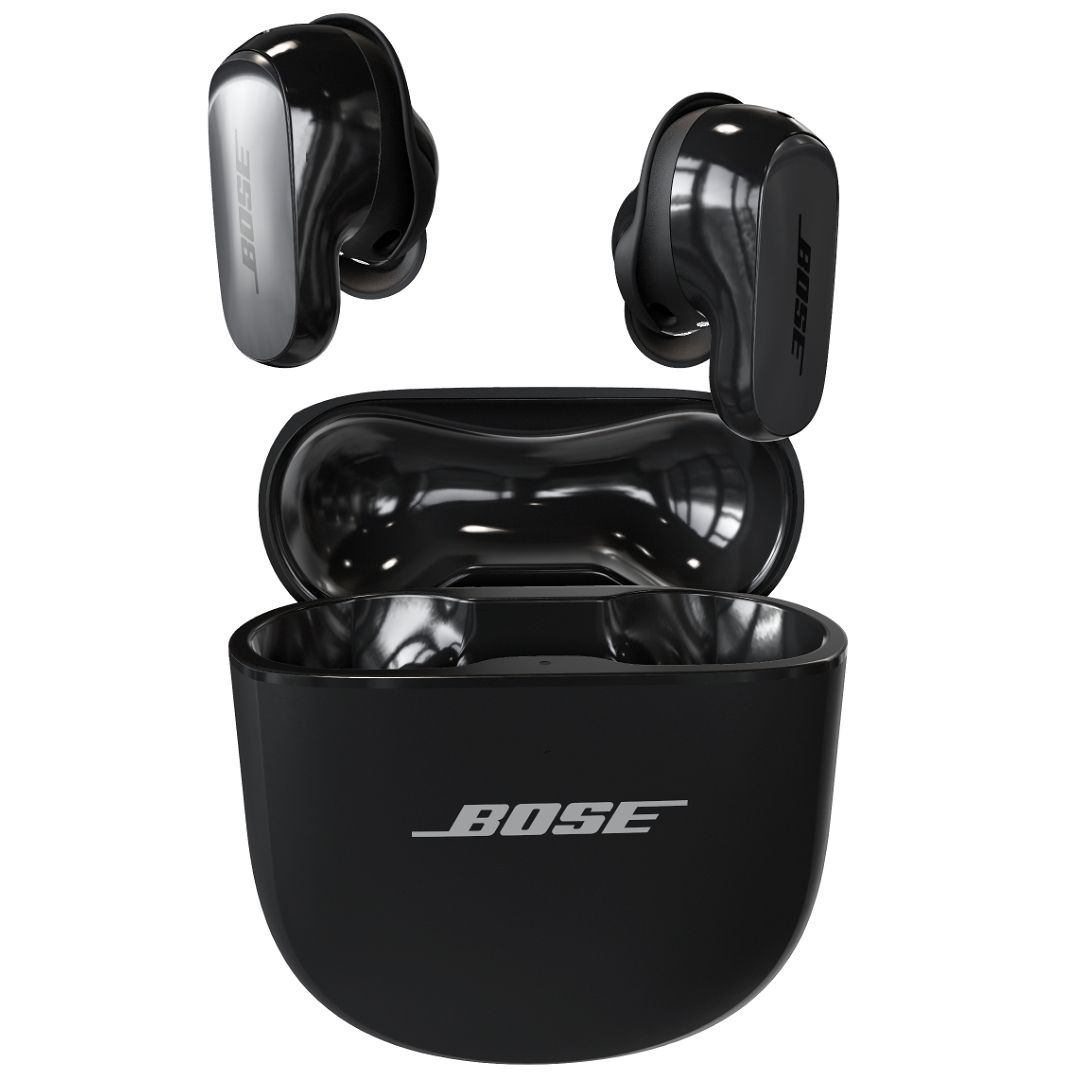
Bose QuietComfort Ultra Earbuds
The Bose QuietComfort Ultra buds have a handful of flaws, but we didn’t ask for perfection — we asked for flagship Bose, and that’s exactly what we got!
But if you’re all about unique color options and maximum battery life, the Google Pixel Buds Pro 2 are still a great option. They sound fantastic and have numerous Android-only in-app customizations. You won’t feel bad if you’re rocking a pair of these.
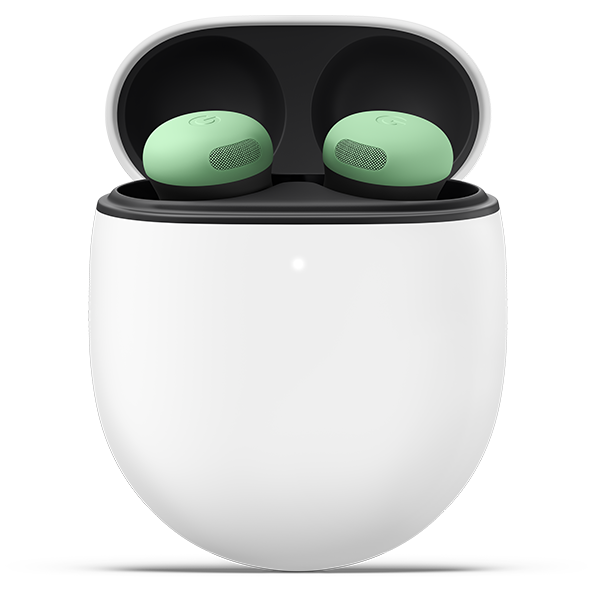
Google Pixel Buds Pro 2
Google made several meaningful improvements to the O.G. Pixel Buds Pro, and we’re eager to see what one or two more software updates will bring to the table.




